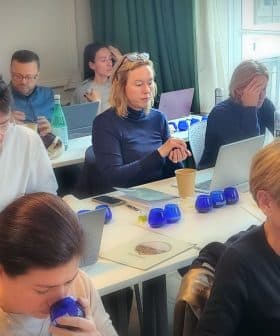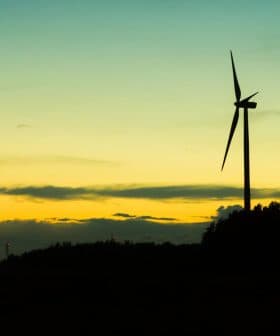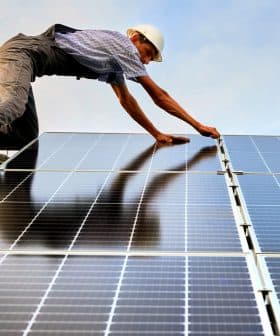Europe’s Agricultural Production Fell Slightly in 2020
In 2020, Europe’s agricultural sector contributed 1.3 percent of the 27-member bloc’s overall GDP, with the E.U.‘s official statistics agency estimating that the gross value added to the agricultural sector was €178.4 billion. The overall number of agricultural workers decreased by 2.9 percent, with significant differences in output values seen across member states and a slight decline in agricultural labor income in 2020.
The latest data published by Eurostat show that Europe’s agricultural sector contributed 1.3 percent of the 27-member bloc’s overall gross domestic product (GDP) in 2020.
Furthermore, the E.U.’s official statistics agency estimated gross value added to the agricultural sector, the difference between the value of production and production costs, was €178.4 billion.
The overall number of agricultural workers shrank by 2.9 percent, slightly more than the average annual decrease of 2.5 percent reported from 2005 to 2019.
See Also:European Olive Oil Exports Expected to Recover as Costs Rise“One way of looking at this is that for every €1 spent on the cost of goods and services used in the production process (known as intermediate consumption), the E.U.’s agricultural industry created added value of €0.76,” Eurostat wrote. “Whilst this relative value-added in 2020 was lower than the €0.79 in 2017, it was still higher than most other years since 2007.”
Adding crops, animals and agricultural services to several other goods and services, Eurostat estimated that in 2020 the 27-member bloc’s agricultural sectors produced €414.1 billion in total value, down by 1.1 percent compared to 2019.
Of that sum, €219.5 billion came from crops, while €159 billion came from animals and animal products. Agricultural services accounted for €20.3 billion, with the rest related to non-agricultural activities that Eurostat could not measure separately.
Eurostat explained that the 1.1‑percent decrease represents “a slight fall back from the peak registered in 2019, which itself was the culmination of an upward trend that had started in 2009.”
“This change in nominal value reflected slight falls in both the nominal price for agricultural goods and services as a whole (an estimated –1.0 percent) as well as in the volume of output (an estimated –0.2 percent),” Eurostat added.
The countries where the dip in output value was most significant were Romania ( – 11.3 percent), the Netherlands ( – 3.1 percent), Italy ( – 2.3 percent), France ( – 1.9 percent) and Germany ( – 1.6 percent).
On the other hand, Spain (+1.1 percent) and Poland (+1.9 percent) were among the leading contributors that saw their overall output value grow, with the sharpest rise being reported in Lithuania (+8.6 percent).
Eurostat’s 2020 data also confirmed the significant differences in agricultural volumes and yields throughout the E.U., with four countries accounting for most of the total output values.
Fifty-nine percent of that came from France (€76.3 billion), Germany (€57.6 billion), Italy (€56.9 billion) and Spain (€52.3 billion). Adding in the output value from the Netherlands, Poland and Romania, Eurostat estimated that 76 percent of the total value of the E.U. agricultural sector came from those seven member states.
Looking at the €235.8 billion of costs faced by farmers, 51 percent came from feeding animals and veterinary services while 11.1 percent came from herbicides, pesticides, insecticides, fertilizers and soil improvers.
See Also:€100B in E.U. Spending Fails to Reduce Emissions in Ag Sector, Audit Finds“The cost of the intermediate goods and services used by the agricultural industry in 2020 was slightly lower than a year earlier (an estimated –1.1 percent),” Eurostat wrote. “The rate of decline was the same as that of the value of agricultural output (an estimated –1.1 percent), resulting in a slight rate of decline ( – 1.3 percent) in the gross value added generated by the agricultural industry.”
In many agricultural sectors, including the olive oil sector, only a small percentage of labor came from salaried workers, given the role that voluntary families and communities take on during the most labor-intensive weeks of the year.
Eurostat data show that in 2020, 6.2 million workers were non-salaried compared with the 2.3 million who were full-time salaried workers.
As noted above, total agricultural labor input declined sharply in almost all member states from 2005 to 2020, with the sharpest decline hitting most Eastern European countries.
“This contraction in the agricultural labor force reflected both push and pull factors,” Eurostat wrote. “There have been great strides in mechanization and efficiency on the one hand and, on the other, a wider choice of attractive job opportunities in other sectors of the economy.”
Income for agricultural labor also dropped 0.8 percent in 2020, compared to the previous year. While a few member states recorded a steep rise in available income for workers in the field, major agricultural countries such as Germany, the Netherlands, Romania, Italy and France saw significant rates of decline.
As a result, Eurostat said the available income rose 31.5 percent compared to 2010 levels.
Eurostat also compiled the risk from the pesticide index, which relates to the volume of pesticides sold throughout the E.U., warning that the types of active substances change over time and sale volumes cannot efficiently estimate the connected potential hazard.
However, the index, “harmonized risk indicator 1,” shows a declining risk from pesticides in most of the European Union.









